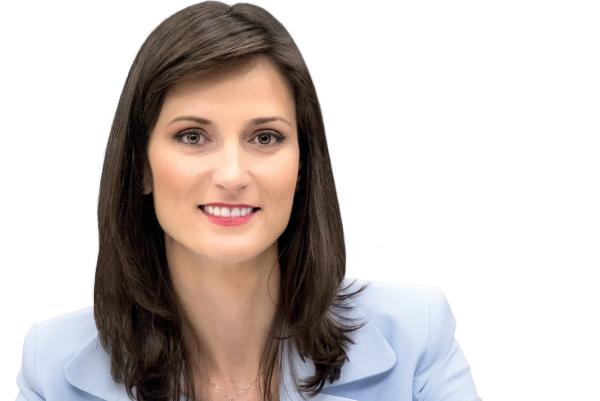Did you know that men and women experience pain differently? The fact that women and men are raised to express pain differently can actually change their biological response to pain as well as their willingness to report it.
Did you also know that technologies such as virtual reality have been shown to be useful for promoting gender equality? A 2018 study showed that people were more likely to feel a personal responsibility to correct gender inequality after being subjected to inequalities in a virtual environment.
These are just two of the many examples highlighted in the new EU report “Gendered Innovations 2”. The purpose of the report is to show how incorporating a gender dimension in research where this has not traditionally been done can enhance creativity, innovation and quality in the research.
“Gender studies was developed over the past several decades for the most part in the humanities and social sciences. But the disciplines are siloed, and few methods of sex and gender analysis have made their way over to engineering departments,” says Londa Schiebinger.
She is a Professor of History of Science at Stanford University and has headed the Gendered Innovations project since its inception in 2009.
A broader gender dimension
The new report includes examples of a gender dimension being adopted in everything from health, artificial intelligence and robotics to transport, marine science and climate change.

Professor Schiebinger believes gender and sex analysis should be integrated into research activities from the earliest phase of a project’s design:
“Gender and sex analysis enhances all phases of research – from setting research priorities, identifying the problem, gathering and analyzing data, through to evaluating and disseminating results. It should be part of the research from the very beginning, not an afterthought.”
Are you calling for inclusion of gender perspectives in all research activities?
“It is, of course, important to ask whether sex, gender, and intersectional analysis is relevant to the planned research. We don’t yet have examples of where this type of analysis is a game changer in theoretical physics yet, for example. But if the research touches humans or biological organisms – say, marine turtles – in any way, it is relevant.”
Gender and sex analysis enhances all phases of research.
Gender and climate change
Professor Schiebinger’s mention of turtles is no random remark. The EU report refers to a case from marine biology that illustrates the necessity of maintaining a gender perspective to more fully understand the impacts of climate change.
“It’s interesting because it’s completely new research. Robert P. Ellis is a young researcher, and when I came across his research I could see how important it is. He shows how climate change is making the oceans more acidic, warmer, and saturated with less oxygen, which negatively impacts marine organisms,” Professor Schiebinger says.
There is a particularly important species of sea turtle in the Great Barrier Reef of Australia. The gender of sea turtles is determined by temperature, and the proportion of female hatchlings increases when the nest lies in warmer sand.
“The turtles in the north of the reef, which is warmer, are much more skewed female than the turtles in the south, where it’s colder. This is not sustainable and means we may lose our turtle population.”
Gendered pain
Professor Schiebinger stresses that all the research sampled in the report is highly important. Of special interest, she says, are studies of chronic pain.
“Gender stereotypes in many cultures expect men to be strong and resolute, which means that men may be less willing to express pain than women. This, of course, varies by ethnicity and other social factors.”
“Physician gender assumptions also influence treatments for men versus women. Clinicians often perceive women’s pain to be psychological; consequently, women receive more non-specific diagnoses, wait longer for treatment, and receive more antidepressants and fewer painkillers than men.”
Quality and creativity in research
Enhancing creativity in research is a main objective of the Gendered Innovations project.
“A key point is that Gendered Innovations enhances excellence in research,” the professor continues.
She explains that reproducibility is a vital aspect of science. If your research activity has no gender dimension, you can be misled into believing that general conclusions can be drawn from data representing only one gender.
“Reproducibility means that if I do an experiment, you should be able to take my methods, do the same experiment and get the same result.”
“Not incorporating gender and sex analysis in research can cost lives and money. Researchers have a duty to be as rigorous as possible.”
Producing research that embodies this approach, Professor Schiebinger believes, will require us to integrate gender and sex analysis into the entire educational system – for example, as part of a computer science or biology course early in each study programme.
“If we do this, we can incorporate gender and sex-based questions at an early stage of education.”
Not incorporating gender and sex analysis in research can cost lives and money.
Deeply committed to enhancing gender equality
Although a growing number of EU-funded projects have included a gender dimension, the report shows that few have managed to do so successfully.

Mariya Ivanova Gabriel is a Bulgarian social scientist and politician. In 2019 she assumed the role of European Commissioner for Innovation, Research, Culture, Education and Youth in the von der Leyen Commission. Ms Gabriel points out that the proportion of gender-related topics under Horizon 2020 rose to more than 36 per cent from 2017 to 2020.
“However, as the experts who have prepared this report also highlight, efficient integration into the content of funded projects still remains low,” Gabriel writes in an email to Kilden.
Gabriel says she has a responsibility to revitalize the gender vision for equality under Horizon Europe.
“Indeed, this is precisely why the European Commission launched this new Expert Group on Gendered Innovations – to update and expand upon the work developed previously, and help better implement the integration of the gender dimension in R&I under Horizon Europe.”
Will follow the recommendations
The report presents a number of policy recommendations to the European Commission. Among them is the necessity of systematic training in how to incorporate a gender dimension across the breadth of Horizon Europe. Gabriel says that several of the recommendations are useful and will have an influence on the EU research funding programme in the years ahead.
“In line with this report’s recommendations, I will make the integration of the gender dimension into R&I content a mandatory requirement, by default, in all Horizon Europe research and innovation action topics and it will be evaluated under the ‘excellence‘ criterion,” Gabriel writes.
She says they are reflecting on the best ways to address this, building on the recommendations of this report. Among other things, they want to increase the quality of proposal evaluation for Horizon Europe.
“The Expert Group also recommends that Horizon Europe have dedicated funding announcements to develop knowledge about intersectionality and gender equality. This is something we will be implementing.”
How do you plan to cooperate with the EU Member States and Associated Countries to bring about these changes?
“In line with the Horizon Europe programme objectives, as of 2021 the Commission will propose the development of inclusive gender equality plans with Member States and stakeholders in order to promote EU gender equality in R&I,” Ms Gabriel writes.
In line with this report’s recommendations, I will make the integration of the gender dimension into R&I content a mandatory requirement.
Gabriel believes a gender dimension is essential to both the quality and social relevance of research and innovation:
“Integrating sex and gender-based analysis into R&I, and adopting an inclusive approach which also considers intersecting social categories such as ethnicity, age or disability, is a matter of producing excellent research to the benefit of all European citizens.”
The article was edited November 26th 08:20.
Translated by Darren McKellep.
- The Gendered Innovations project incorporates the gender dimension in research activities to foster innovation and creativity.
- The project was launched at Stanford University in 2009. From 2011 to 2013, the European Commission funded an expert group with the goal of integrating a gender dimension in EU research activities.
- From 2019 to 2020, the European Commission established an expert group to help develop Horizon Europe, in order to update and expand upon the methods and case studies of the Gendered Innovations project.
- The peer-reviewed project develops practical methods for researchers to incorporate sex and/or gender analysis, including in natural science and technology disciplines. Gendered innovation generally takes an intersectionality perspective, meaning that other factors in addition to sex and gender are also considered important.
- The project’s case studies illustrate specific ways in which gender perspectives lead to new ideas and excellent research.
- The case studies and methods were developed through European and international collaboration. Participants from Norway were Elisabet Ljunggren of Nord University, Roger Søraa of NTNU and Linda Rustad of Kilden genderresearch.no.



